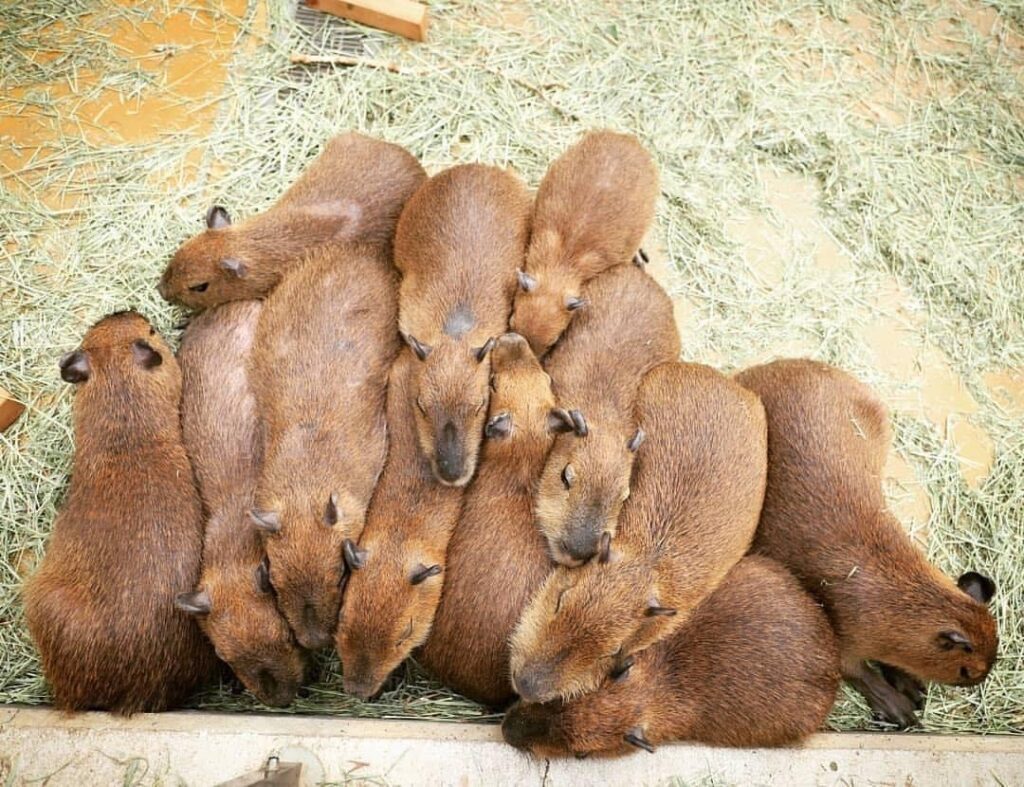Capybaras, native to South America, are known for their docile nature and social behavior. They have gained popularity as exotic pets in recent years. As the world’s largest rodent, they require special care and a unique environment. This comprehensive guide covers everything you need to know about capybaras as pets.
Table of Contents
Toggle
What is a Capybara?
Capybaras (Hydrochoerus hydrochaeris) are the largest rodents in the world, weighing between 77 and 146 pounds and measuring up to 4.3 feet in length. They are semi-aquatic mammals with a love for water. Capybaras are highly social animals that live in groups in their natural habitat, and they communicate using a variety of vocalizations.
Capybara Characteristics
Capybaras are known for their calm and friendly demeanor. They are highly intelligent and can be trained to perform basic commands. However, they have a strong instinct to chew and may gnaw on furniture or other household items. Capybaras are herbivores, primarily grazing on grasses and aquatic plants.
Are Capybaras Good Pets?
Capybaras can make good pets for those who have the space, time, and resources to meet their unique needs. They require a large, secure outdoor space and a water source for swimming. Capybaras are social animals and do best when housed with at least one other capybara. They can bond with humans and other animals, but proper socialization is crucial.
Capybara Health Issues
Capybaras are relatively hardy animals, but they can suffer from health issues such as obesity, dental problems, and respiratory infections. To maintain a healthy capybara, it’s essential to provide a proper diet, regular veterinary care, and a clean, stress-free environment.
Capybara Diet
Capybaras are strict herbivores. Their diet should consist mainly of fresh grasses and hay, along with a variety of vegetables and fruits. Avoid high-sugar and high-starch foods. Some owners choose to supplement their capybara’s diet with specially formulated rodent pellets.
Capybara Housing and Environment
Capybaras need a large, secure outdoor enclosure with plenty of space to roam, graze, and swim. Provide a pond or pool for swimming and a sheltered area for sleeping and protection from the elements. The enclosure should be escape-proof, as capybaras can be determined escape artists.
Capybara Socialization and Training
Socialization is crucial for capybaras, as they are social animals that thrive on interaction. They should be housed with at least one other capybara and can form bonds with other animals such as dogs and cats. Training can be achieved using positive reinforcement techniques, but patience and consistency are required.
Capybara Exercise and Enrichment
Capybaras need daily exercise and mental stimulation. Provide opportunities for swimming, grazing, and exploring their environment. Provide toys and other items for chewing and playing, such as large branches or sturdy ropes.
Legal Considerations and Permits
Before getting a capybara as a pet, check your local and state regulations. Capybaras are considered exotic animals, and owning one may require special permits or be prohibited in some areas.
Capybaras can make unique and rewarding pets for the right person, but they require a significant commitment in terms of space, time, and resources. If you’re considering adding a capybara to your family, be prepared to meet their specific needs and provide a safe, stimulating environment for them to thrive. Keep in mind the legal implications and ensure that you have the necessary permits and permissions in place. With proper care, socialization, and attention, capybaras can become affectionate and loyal companions, offering a truly one-of-a-kind pet experience.



